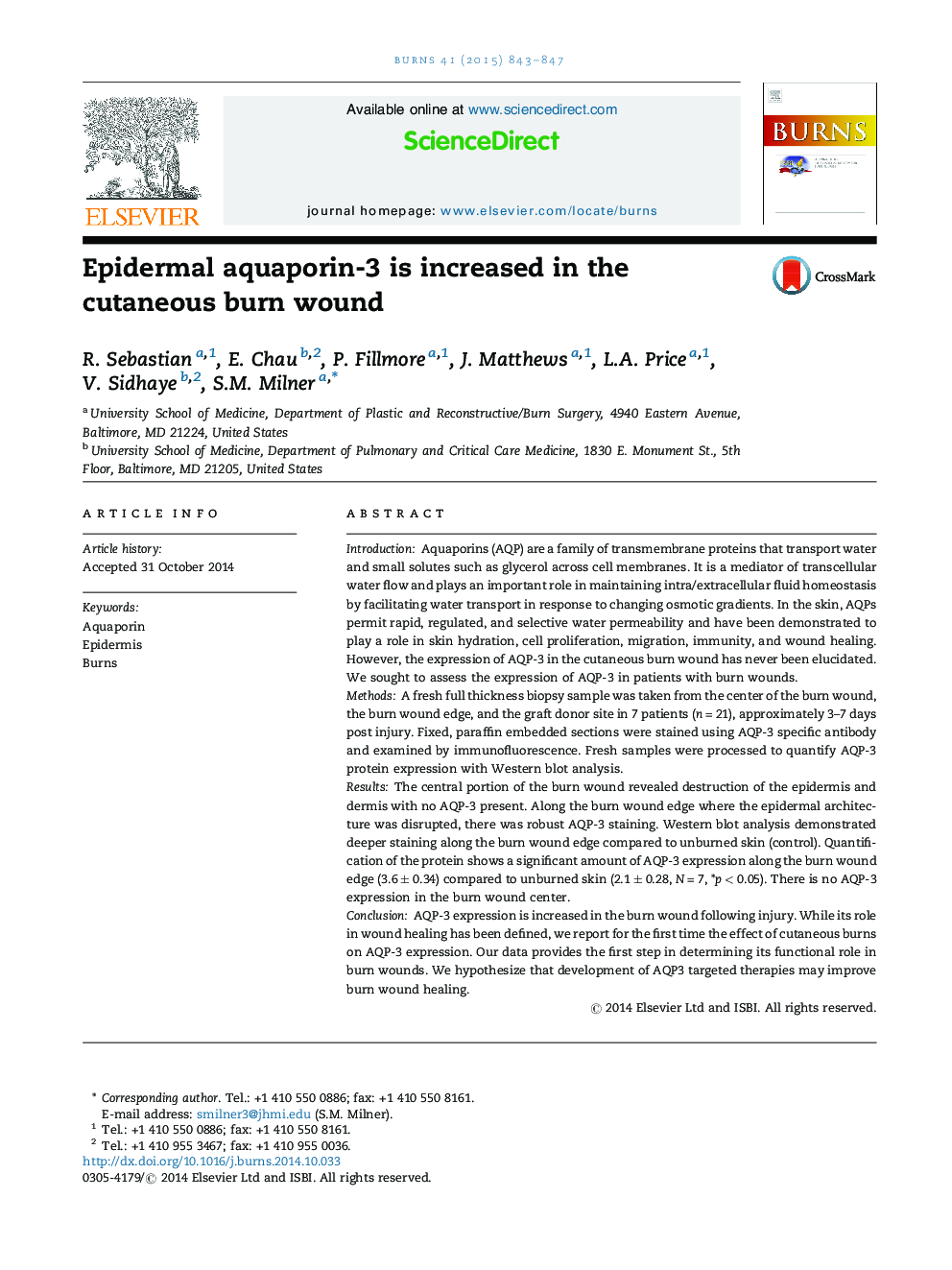| کد مقاله | کد نشریه | سال انتشار | مقاله انگلیسی | نسخه تمام متن |
|---|---|---|---|---|
| 3104305 | 1191648 | 2015 | 5 صفحه PDF | دانلود رایگان |
• In the skin, AQPs permit rapid, regulated, and selective water permeability and have been demonstrated to play a role in skin hydration, cell proliferation, migration, immunity, and wound healing.
• The burn wound edge demonstrates a partial loss of the epidermal architecture representing a partial thickness burn.
• In the burn wound center there is a complete loss of the epidermis and dermis representing a full thickness burn.
• Aquaporin-3 expression is absent in the burn wound center.
• There is a significant increase in the quantity of aquaporin-3 expression along the burn wound edge compared to the burn wound center.
IntroductionAquaporins (AQP) are a family of transmembrane proteins that transport water and small solutes such as glycerol across cell membranes. It is a mediator of transcellular water flow and plays an important role in maintaining intra/extracellular fluid homeostasis by facilitating water transport in response to changing osmotic gradients. In the skin, AQPs permit rapid, regulated, and selective water permeability and have been demonstrated to play a role in skin hydration, cell proliferation, migration, immunity, and wound healing. However, the expression of AQP-3 in the cutaneous burn wound has never been elucidated. We sought to assess the expression of AQP-3 in patients with burn wounds.MethodsA fresh full thickness biopsy sample was taken from the center of the burn wound, the burn wound edge, and the graft donor site in 7 patients (n = 21), approximately 3–7 days post injury. Fixed, paraffin embedded sections were stained using AQP-3 specific antibody and examined by immunofluorescence. Fresh samples were processed to quantify AQP-3 protein expression with Western blot analysis.ResultsThe central portion of the burn wound revealed destruction of the epidermis and dermis with no AQP-3 present. Along the burn wound edge where the epidermal architecture was disrupted, there was robust AQP-3 staining. Western blot analysis demonstrated deeper staining along the burn wound edge compared to unburned skin (control). Quantification of the protein shows a significant amount of AQP-3 expression along the burn wound edge (3.6 ± 0.34) compared to unburned skin (2.1 ± 0.28, N = 7, *p < 0.05). There is no AQP-3 expression in the burn wound center.ConclusionAQP-3 expression is increased in the burn wound following injury. While its role in wound healing has been defined, we report for the first time the effect of cutaneous burns on AQP-3 expression. Our data provides the first step in determining its functional role in burn wounds. We hypothesize that development of AQP3 targeted therapies may improve burn wound healing.
Journal: Burns - Volume 41, Issue 4, June 2015, Pages 843–847
